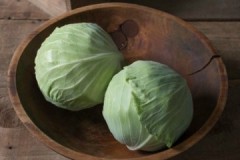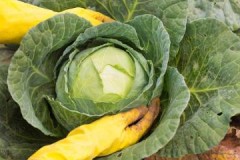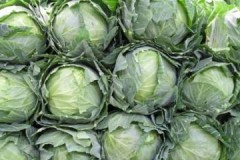We keep the harvest until spring: at what temperature can and should you store cabbage?
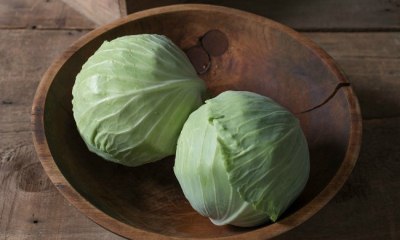 Cabbage is a storehouse of vitamins, minerals, antioxidants and dietary fiber. It can remain fresh for several months, but certain conditions must be created for this.
Cabbage is a storehouse of vitamins, minerals, antioxidants and dietary fiber. It can remain fresh for several months, but certain conditions must be created for this.
For information on the temperature at which different varieties of fresh cabbage can be stored in winter, what happens when it rises or falls during storage, read the article.
Content
Optimum temperature indicators for storing fresh vegetables in winter
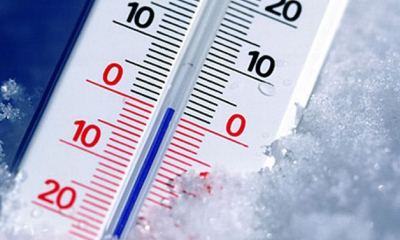 To keep white cabbage fresh and crispy, it must be stored between 0 and +1 degrees. Therefore, for the winter, it is removed to the cellar.
To keep white cabbage fresh and crispy, it must be stored between 0 and +1 degrees. Therefore, for the winter, it is removed to the cellar.
It is impossible to create such conditions in an apartment. The only available option is a closed wardrobe on a glazed balcony. To prevent the vegetables from freezing, they are additionally insulated with foam.
In the garden, frost-resistant varieties can “survive” even light frosts... The main thing is that the air temperature does not drop below -5 degrees. Harvest after the first freezing. Light freezing will benefit the heads of cabbage. It will give the leaves a sweetish taste.
Cut heads of cabbage cannot be stored outside at sub-zero temperatures.
If above normal
If the ambient temperature exceeds + 1 ... + 3 degrees, the cabbage will start to deteriorate. This process cannot be called lightning fast. The vegetable will remain usable for another 1-2 weeks, even if it is kept at home.
In warm cellars, heads of cabbage can lie longer, up to 1 month... After a specified period, they will begin to germinate, and the leaves will dry.
Warm air and high humidity levels promote microbial growth. Therefore, vegetables will rot.
If below
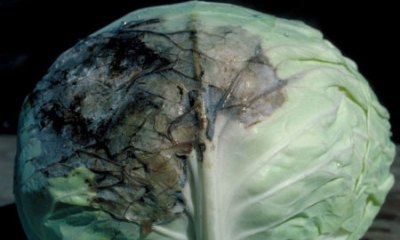 The minimum permissible minus values for storing fresh white cabbage are -0.8 degrees. If the temperature drops below leaf tissues freeze, black appears on them.
The minimum permissible minus values for storing fresh white cabbage are -0.8 degrees. If the temperature drops below leaf tissues freeze, black appears on them.
Experts call such defects "cuffs". They represent the darkened and decayed interior of the head of cabbage. In dense varieties, "cuffs" are formed faster than in loose varieties.
Cabbage is 90% water. At sub-zero temperatures, it crystallizes and destroys the fibrous cells from the inside, as a result of which the vegetable tissue softens.
Frozen cabbage (provided there is no rot) can be used to make stuffed cabbage... Its leaves will become pliable, so it is easy to wrap the filling in them. Fresh frozen cabbage is not consumed.
If constantly changing
The worst of all the crop tolerates constant temperature drops. Lack of stability leads to quick spoilage of heads. They start to rot and give off an unpleasant odor.
The most unpretentious varieties
Varieties with tight-fitting 2-3 leaves are subject to long-term storage. The heads of cabbage should be tough, not loose.
It is unacceptable to send rotten and sprouted specimens to the cellar... They should be free of soil, signs of disease or deterioration.
The cabbage should be smooth and medium in size. Damaged leaves do not heal, so they need to be removed without regret.
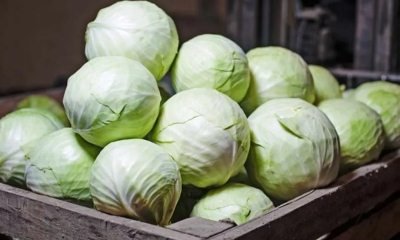 Varieties that are resistant to temperature changes:
Varieties that are resistant to temperature changes:
- Present. This variety is grown even in Siberia.
- Kolobok F1.
- Alaska F1.
- Wintering 1474.
- Morozko.
- Kharkov winter.
Loose and early maturing varieties are not grown for long-term storage, as they do not tolerate frost well. Even in ideal conditions, heads of cabbage will not lie longer than until the new year.
Features for Beijing
Peking cabbage is very temperature sensitive. Depending on environmental conditions, the shelf life will differ:
- At +20 degrees and above - 24-36 hours.
- At a temperature of -3 ... + 3 degrees - 14 days.
- In the freezer - 3 months or more.
Nuances for color
The shelf life of cauliflower directly depends on the air temperature. Fresh cauliflower "feels" best in the cellar.
Main parameters:
- At 0 ... + 3 degrees (in the refrigerator) - up to 30 days.
- In the freezer at -18 degrees - 12 months.
- At -1 ... 0 degrees - from 3 to 7 months.
Helpful information
To keep the cabbage fresh for as long as possible, the following recommendations should be taken into account:
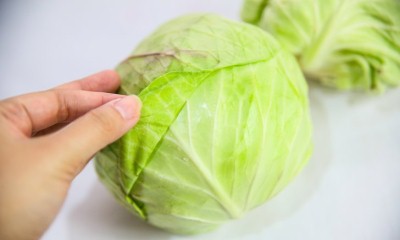 Heads of cabbage should be stored in bulk or in a container, away from ethylene-producing fruits.
Heads of cabbage should be stored in bulk or in a container, away from ethylene-producing fruits.- The air should be not only cool, but also fresh. Poor ventilation will quickly spoil vegetables.
- Heads of cabbage must be stacked upside down.
- Vegetables can endure a short cooling to -1.5 degrees, but such a decrease in temperature should be short-term.
Conclusion
Cabbage can be stored for a long time at temperatures not lower than zero and not higher than +1 degrees. In such conditions, it remains fresh for several months.
It is not recommended to freeze and overheat vegetables., so as not to provoke their damage.

